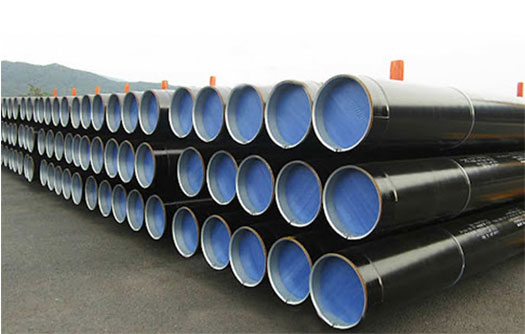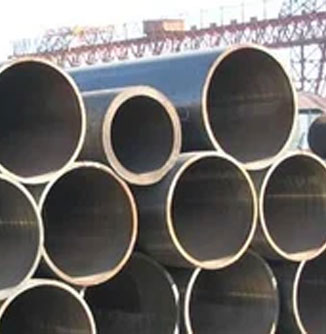Phone Number
+91-22-66287900


API 5 L is the most commonly accepted specification for making helical welded pipes. The common grades under this standard include X42, X52, X60, and X65.
| Elements | Maximum Element Content in Percentage (%) | |||||||||
Grade B | Grade A | Grade X42 | Grade X46 | Grade X52 | Grade 56 | Garde 60 | Gard0e 65 | Grade 70 | Grade A25 | |
| Carbon | 0.26% | 0.22% | 0.26% | 0.26% | 0.26% | 0.26% | 0.26% | 0.26% | 0.26% | 0.21% |
| Manganese | 1.20% | 90% | 1.30% | 1.40% | 1.40% | 1.40% | 1.40% | 1.45% | 1.65% | 60% |
| Sulfur | 0.030% | 0.030% | 0.030% | 0.030% | 0.030% | 0.030% | 0.030% | 0.030% | 0.030% | 0.030% |
| Phosphorous | 0.030% | 0.030% | 0.030% | 0.030% | 0.030% | 0.030% | 0.030% | 0.030% | 0.030% | 0.030% |
| Grades | Minimum Yield Strength | Minimum Tensile Strength |
| Grade A25 | 25 psi | 45 psi |
| Grade A | 30 psi | 48 psi |
| Grade B | 35 psi | 60 psi |
| Grade X42 | 42 psi | 60 psi |
| Grade X46 | 46 psi | 63 psi |
| Grade X52 | 52 psi | 66 psi |
| Grade X56 | 56 psi | 71 psi |
| Grade X60 | 60 psi | 75 psi |
| Grade X65 | 65 psi | 77 psi |
| Grade X70 | 70 psi | 82 psi |
| Grade X80 | 80 psi | 90 psi |
Unlike ERW pipes, Helical welded pipes involve SAW manufacturing or Submerged Arc Welding. Thus, this tubing uses metal fillers and a conductive flux during the welding process to fuse the plates. These substances are deposited on the steel coil edges to help close the seam.
In its solid or unheated state, the flux cannot conduct currents. However, once heated, it easily acts as a conductor to pass electricity between the electrode and the seam. This flux also helps cover the sparks and fumes usually emitted during the welding process.
Meanwhile, the filler material to close the seam is usually a wire up to 6mm thick. This material is fed to the open seam of the steel coil at a regulated speed and heated by the current conducted by the flux. This helps weld the edges together.
This filler is usually copper coated to prevent corrosion and rust of the steel pipe. The seam may be closed from the outside, inside, or on both sides.
To get the shape, size, and structure correct, manufacturers fold and weld the strips using the helix angle for guidance. Also called the molding angle, this scale impacts the pipe's residual stress. Using this scale correctly also helps improve surface roughness, resistance, and more. The steel strips are bent and welded at this angle to make helical pipes.
Though used in the petrochemical industry, helical pipes are more commonly seen in water engineering and agriculture. These pipes are capable of carrying gas, or LPG, across distances, but they are better suited to transport non-critical substances like water or steam for irrigation, drainage, or supply.
However, helical pipes generally have a lower-than-average physical dimension despite their easy malleability. In some cases, the welding seam length may be longer than the actual pipe length. Poorly made helical pipes may also show defects like cracks, air holes, and partial welding.